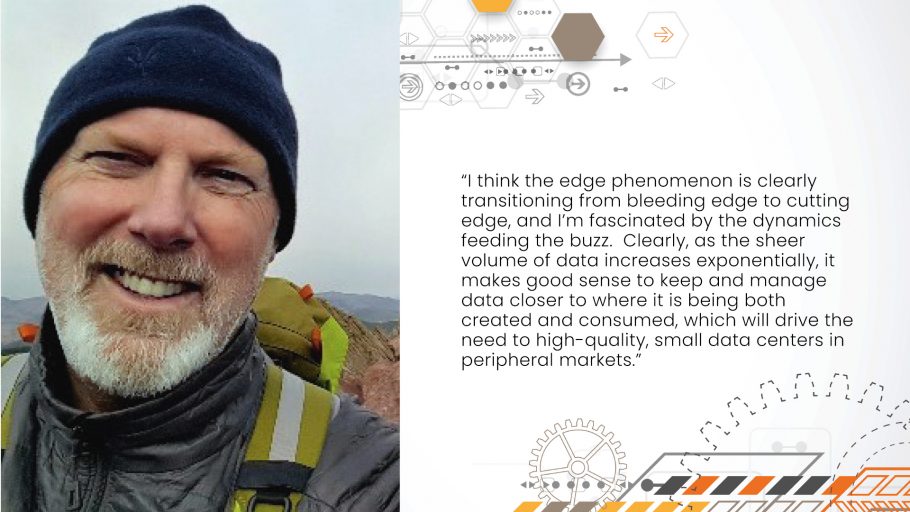Michael, recognized as the pioneer in the creation of digital infrastructure, is now manufacturing an innovative, new generation of enterprise-class modular data centers. IG Magazine Editor-in-Chief Jasmine Bedi recently interviewed Michael Roark and learnt about his new endeavor.
Tell us about your foray into digital infrastructure and building data centers.
My roots as a builder go back to carpentry as a teenager and after coming up through the ranks in the construction industry, I opened the doors of my own firm in 1986 that quickly became one of Florida’s largest design/build firms. We built a wide variety of projects, including high-rise and civil works, but became known for tackling complex projects with difficult logistics and timeframes, such as phased renovations and additions to fully-occupied Fortune 500 corporate headquarters. I became deeply involved with building for telecom and colocation firms in the mid-90’s, based heavily on our ability to move quickly, and gradually turned our entire focus to the creation of mission-critical facilities. We developed several carrier hotels, recognized how a telco’s biggest competitor could also be a major customer and how these companies needed to cluster into heavily interconnected buildings. We pioneered effective new designs, some simple and some highly technical, but all based on good design and common sense. In certain locations, we actually built metro carrier-neutral fiber loop systems to ensure the ability for dense interconnection within our buildings, even developing what became Digital Realty’s first asset in 2001. It was in our Cleveland carrier-hotel that we built our first data center that became the cornerstone for FiberMedia’s collection of colocation facilities.
Starting as a builder, then evolving a specialization in mission-critical facilities, before developing the underlying buildings, and finally, ending up in the colocation business. Would it be safe to say you’re circling back to your starting point?
Yes, colocation in its present form became less interesting, and I sold FiberMedia in 2010, which became the basis for what is now vXchnge, and then sold my Miami data center and metro fiber loop businesses in 2017. So, after designing, engineering, building, owning and operating data centers for over twenty years, I’m back to my roots, but with a somewhat radical perspective and entire focus on making the best, most cost-effective freestanding data centers available. I have also always been a huge fan of the factory-built approach to making buildings, even when our focus was not mission critical many years ago, such as for high-end retail stores we prefabricated within our shop and were able to install and open within a week. I’ve carefully studied the coming of age of modular assembly systems, and have been well-impressed with early entry data center innovators such as iO and Colt as well as other types of pre-fab construction, including a beautiful 32-floor modular building completed by a good friend. iM Data Centers is on our own second generation of modular facilities now, and with completed proof-of-concept models behind us, we have started to enter the market.
What role does the EDGE Computing Era play in your thinking?
I think the edge phenomenon is clearly transitioning from bleeding edge to cutting edge, and I’m fascinated by the dynamics feeding the buzz. Clearly, as the sheer volume of data increases exponentially, it makes good sense to keep and manage data closer to where it is being both created and consumed, which will drive the need to high-quality, small data centers in peripheral markets. I am not sure what this ends up looking like though, how 5G will actually roll out and the related details. Our own laser-focus is on using factory-based assembly and modular design to simply make higher-quality, less expensive facilities. We are fanatically driven to marry the efficiencies of compartmentalized environments with user-friendliness. For example, as a colocation provider, we were always adding and removing fiber, copper and power cabling and, as an operator, I disliked the limitations of existing systems for cable management. Developing a fresh manufacturing approach forced us to re-think the best way to ensure ongoing cable delivery and such, through the eyes of us that actually run cables and make new terminations. We are also fanatics for energy efficiency and opex reduction, as well as creating user-friendly space to work in, ample clearances, contiguous space, getting to the back of a rack without a torturous route and other experience-driven factors.

With regard to modular data centers, what is your focus?
We started with standalone, expandable facilities based on 25-rack modules with power densities up to 12 KW per rack as a sweet spot however, based on requirements that knocked on the door, we’ve created a diverse set of solutions tailored to exact customer needs. I’m particularly excited about our standalone HPC data centers running from 20kW to over 100kW per rack and priced at well under $5million per megawatt. Simply put, we are factory-building smarter plug and play, enterprise-class data centers for sale, and also willing to provide leasing and fully-managed options. It helps that our construction background enables us to provide a turnkey deployment approach by handling the related site improvements to whatever the extent our customers would like.

